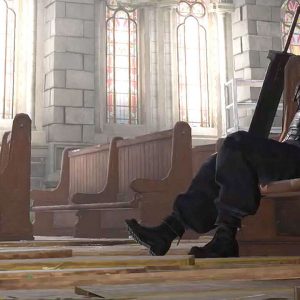Sinners is a masterpiece. Ryan Coogler makes a movie that features vampires, but it is not just a horror movie. It is more.
The film tells the story of Elijah “Smoke” and Elias “Stack”, twin brothers played by Michael B. Jordan who left rural Mississippi and fought in World War One. They then made a name for themselves in Chicago working with Al Capone, but return home to open a juke joint because “Chicago is like Mississippi, just with taller buildings.” On the night they open the joint, vampires show up and chaos ensues.
Now, if you have not seen the movie, stop reading here and go watch it. It is a movie to be seen on the biggest screen possible. What’s more, Delroy Lindo steals every scene he is in, so he better get some Oscars love next March or Black folks will riot in the streets.
With Sinners, Ryan Coogler had more on his mind than a simple horror movie. There are five things that leap off the screen they contain so much symbolism, but I’m going to spoil some elements of the film…so read at your own risk.
The Guitar
Miles Canton plays Sammie, a gifted musician whose music attracts the malevolent otherworldly beings. Everywhere he goes, Sammie carries with him a beautiful guitar that Stack tells him once belonged to Charley Patton, father of the Delta blues. There is a scene halfway through the film where Coogler visually connects Black music across generations as he shows us Black people singing and dancing in the 1930s, but while the camera drifts we then see Black people in African clothes dancing, a DJ spinning on a turn table, and a man playing the electric guitar dressed in clothes that brings George Clinton and Funkadelic to mind.
The guitar is symbolic of the power of Black music. Coogler is saying that it has the power to sooth us, but it can also attract those who are unwanted.
The Vampires
It is not by mistake that the horror begins right after the scene that showcases Black music. The vampires are white people who are attracted to the power of Black music. Remmick, the chief vampire, is willing to let everyone live if the people inside the club would hand over Sammie. He is the key.
The vampires are colonizers. They want to own our music, so by extension, they want Black culture. Coogler uses the language of horror to show us the real threat of the film: whiteness.
The Sawmill
The place that Smoke and Stack buy from a white landowner was once a killing floor where white supremists ended the lives of an untold number of Black people. The reality of what the building was used for was hinted early in the film when one of the brothers noticed a stain that looked like blood on the floor, but it is said explicitly in the final act. The building is stained doubly by Black blood. First by white supremists, then by the vampires.
Scars
Sammie is hurt at the end of the film. We see him scarred as the film opens, but it is not clear until the end what hurts him. They are like the blood that stained the floor of the sawmill. Those scars are a reminder of what he has seen.
The Church
The movie opens and closes at the church. (Hopefully you stayed for the post credit scene.) The movie is about Sammie wrestling with his calling to play music. He wants to play it wherever he wishes, but his father calls him a sinner because he loves the blues. In the end the church is a both a place of salvation and damnation. It is almost as if Coogler is saying that he respects the church, but he does not want Black music to be chained there.
Sinners is Ryan Coogler’s best film. It is not a horror film about vampires. Whiteness is the evil that lurks outside the door.
This story originally appeared on The Root, our sister site, on Friday, April 18.
.























